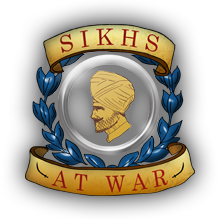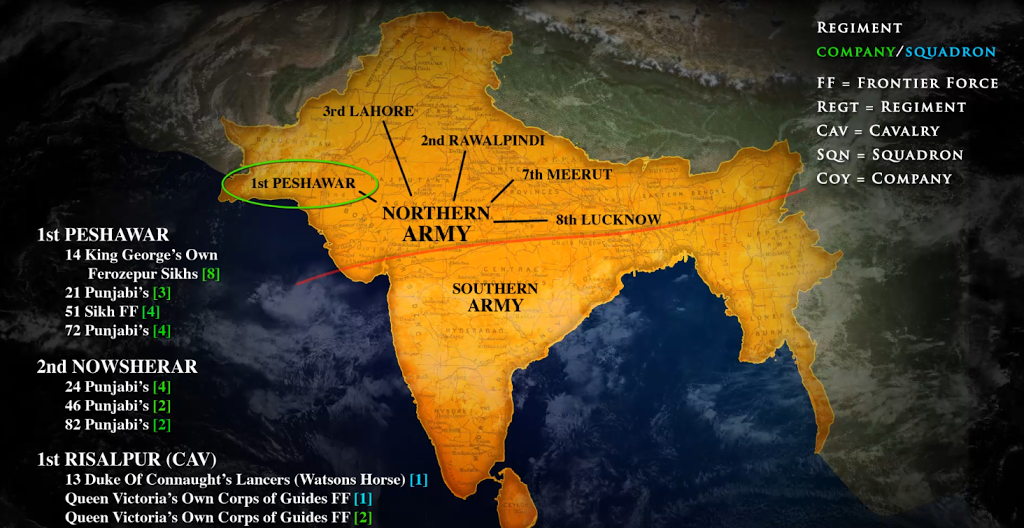British Sikh Regiments: An OrBat from 1914
Leave a CommentTo researchers of the First World War, it provides vital information and understanding about the units deployed to certain arenas of war. This is significant now, as we try to understand how the Sikh regiments were represented in the British Indian Army in 1914.
Acknowledging this enables us today to fully appreciate the huge sacrifice of the Sikhs – a race of people that despite being just 1% of the population at the time were represented in a third of all native British Indian regiments.
Having researched the OrBat of the British Indian Army, the below film depicts for the first time how they were organised. It shows solely the line up of regiments containing Sikhs, white units and non-Sikh units are not included for the purposes of the film:
The Sikhs made up a significant part of the forces, we know. Their were Sikh class-based regiments as well as Sikhs serving in mixed-class Punjabi regiments.
Within the cavalry, we can pick out the the 2nd Lancers (Gardner’s Horse) as one regiment with a rich military history; earning battle honours at Arracon, Sabroan, Egypy and Tel-el-Kebir. It’s composition consisted of x1 Sikh, x1 Rajput, x1 Jatt (Hindu), x1 Hindustani Muslim squadrons. The regiment would play a key role throughout the war on the western front, fighting at La Basee, Givenchy, Neuve Chapelle, Festubert, Somme, Morval and Cambrai.
Within the infantry, the 9th Bhopal had a battle honour from Afghanistan 1878. The regiment consisted of x2 Sikh, x2 Rajput, x2 Brahman and x2 Muslim double-company squadrons (a unique Indian set up, consisting of around 80 soldiers). The regiment went from India to serve in France but in 1915 was moved to Egypt and then Mesopotamia.
In total, according to my research, the Sikhs were represented in x29 cavalry regiments and x54 infantry regiments. To this we can add the x2 Sappers and Miners.
That means a total of 83 regiments contained Sikhs – either as a wholly Sikh class-based regiment or with Sikh squadrons or double-companies.
This is an immense contribution – unseen anywhere else by any other racial grouping.
It is inspiring and something we British Sikhs in particular should be extremely proud of.



